A Guide to Earth’s Lithosphere
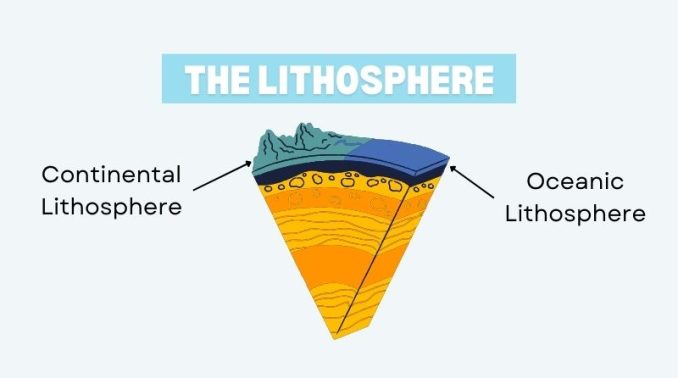
“Earth scientists often compare the lithosphere to a thin, solid, and brittle eggshell encasing our inner planet.”
Others characterize the lithosphere as a thick piece of wood that dries and breaks.
No matter how you want to describe it, the lithosphere is the solid layer we live and play on.
Today, we’re going to explore the lithosphere. Specifically, we’ll examine the crust and the uppermost part of the mantle.
Why do we have a lithosphere? And why is it important? Let’s dive right in.
Why does Earth have a lithosphere?
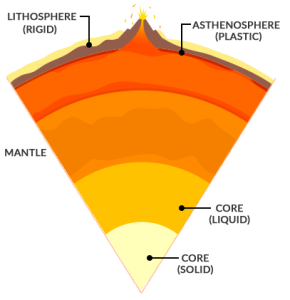
About 4.5 billion years ago, the Earth was a hellacious scene. Molten lava flowed everywhere. And Earth was constantly being pelted by meteorites during the bombardment period.
But eventually, Earth started to cool down in the Archean Eon. Soon after a dramatic period of Earth heating, Earth’s lithosphere began to form.
Continents began to rise up out of the mantle. The lighter and buoyant rock floated up to form the top lithosphere layer. Then, the heavier material formed the core-mantle boundary region.
The lithosphere is located between the asthenosphere below and the atmosphere above. It consists of the solid crust and the uppermost mantle. Then, we break the crust further down into the continental and oceanic crust.
What’s the difference between oceanic vs. continental crust
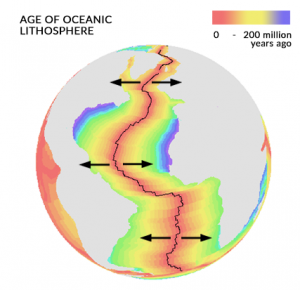
The oceanic and continental crust make up Earth’s upper lithosphere. The oceanic crust is very young in comparison to the continental crust. The oldest oceanic crust is 200 million years old [1]. But the oldest continental crust is as old as 4 billion years.
The oceanic crust forms at divergent plate boundaries. For example, oceanic crust forms at the mid-Atlantic Ridge under the Atlantic Ocean.
At these underwater constructive plate boundaries, lava spews out to form new igneous rocks. Because divergent plates move apart, the age of rocks gets older away from the tectonic plate boundary.
As the name implies, continental crust consists of the continents we live on. But it also includes the shallow seabed close to shores called continental shelves.
How does the rock cycle change the lithosphere?
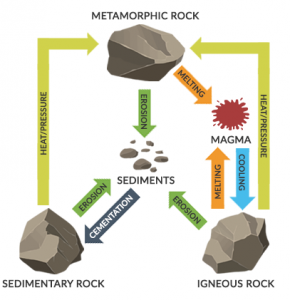
Throughout the history of Earth, our lithosphere has undergone continuous recycling as part of the rock cycle.
The rock cycle creates and destroys Earth’s crust through tectonic activity. Like a well-oiled clock, rocks change types from:
Lithosphere rocks sink deep down into Earth at convergent plates. Then, they rise back up as magma. If these existing rocks erode away, they can cement again into sedimentary rocks.
The ocean bottom is mostly igneous rocks.
- If you look at all the rocks on Earth, 80% are igneous, 15% are metamorphic and 5% are sedimentary rocks.
- 75% of the continents are sedimentary rocks.
What role does the lithosphere play in plate tectonics?
Earth has 7 major tectonic plate boundaries and several microplates. They’re unusually shaped containing both oceanic and continental crust.
The lithosphere is always on the move. Albeit, it’s a slow movement. The fastest plate races at 15 centimeters (6 inches) per year. But the slowest plate crawls at only 2.5 cm per year.

If you could rewind time 250 million years in the past, all the continents were once connected as Pangea. Like a slow-motion puzzle, continental drift dragged them into how we see them today.
Tectonic plates diverge, transform or converge with each other. It’s common to see divergent plates in the ocean bottom as large mountain chains.
On the other hand, convergent boundaries are often at the edges of continents like the Pacific Ring of Fire. These types of tectonic plates have caused some of the largest disasters in history like earthquakes, volcanoes, and tsunamis.
What is the density and depth of the lithosphere?
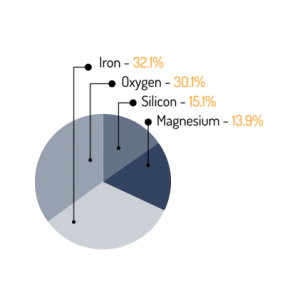
The depth of the lithosphere is tiny in comparison to inside Earth.
- CONTINENTAL CRUST: Continental crust is 30-35 km thick
- OCEANIC CRUST: Oceanic crust is even thinner averaging about 5 km in thickness
In terms of density, the crust is the least dense of all the layers of Earth. Throughout the planet, the average density is about 5.513 g/cm3. But the density of Earth’s crust is about 2.5 g/cm3 because how it contains mostly rocks rich in silica.
Overall, Earth’s density steadily increases inwards to the core. If you compare the crust’s density to deep inside the planet, Earth’s inner core has the highest density at 12.9 g/cm3.
A Guide to Earth’s Lithosphere
The lithosphere is the rigid outermost shell of a planet or other rocky body. It is composed of two layers: the crust and the uppermost mantle.
The name “lithosphere” comes from the Greek words meaning “stone layer.” The lithosphere is divided into tectonic plates, which are in turn broken up into smaller plates that make up the Earth’s crust.
Alternatively, please use the comment form below to get in touch with us for questions or comments.
References
[1] Müller, R. D., Sdrolias, M., Gaina, C., and Roest, W. R. ( 2008), Age, spreading rates, and spreading asymmetry of the world’s ocean crust, Geochem. Geophys. Geosyst., 9, Q04006, doi:10.1029/2007GC001743.



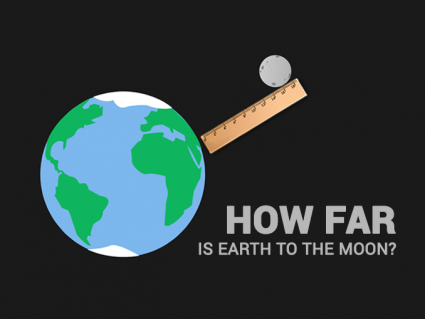
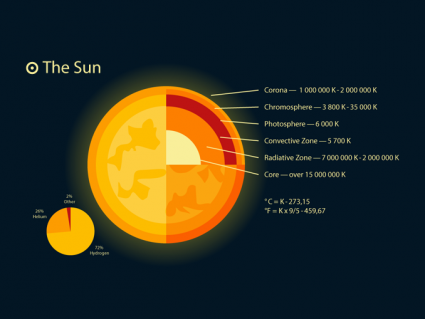
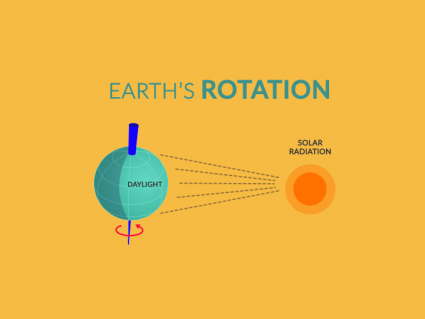
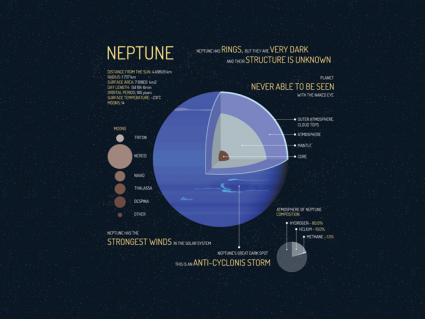
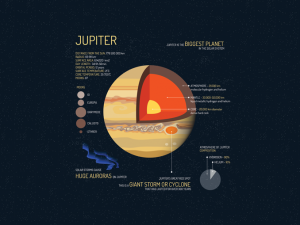
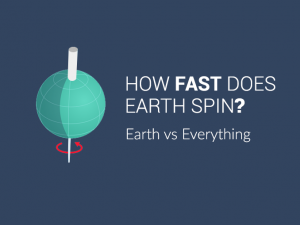
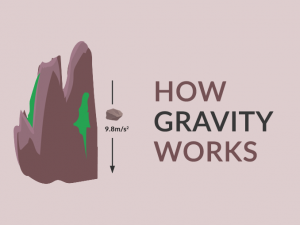
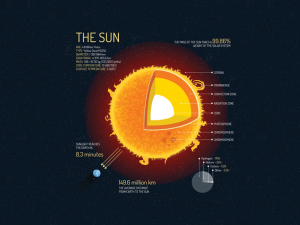
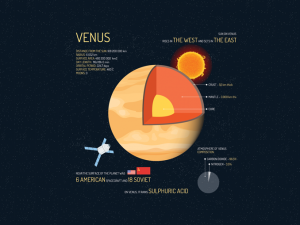
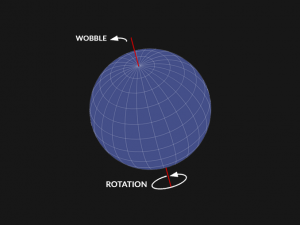
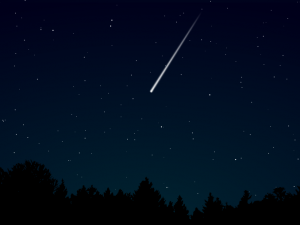

Changing face of the lithosphere
Interesting